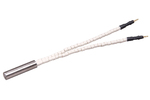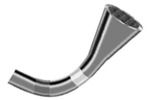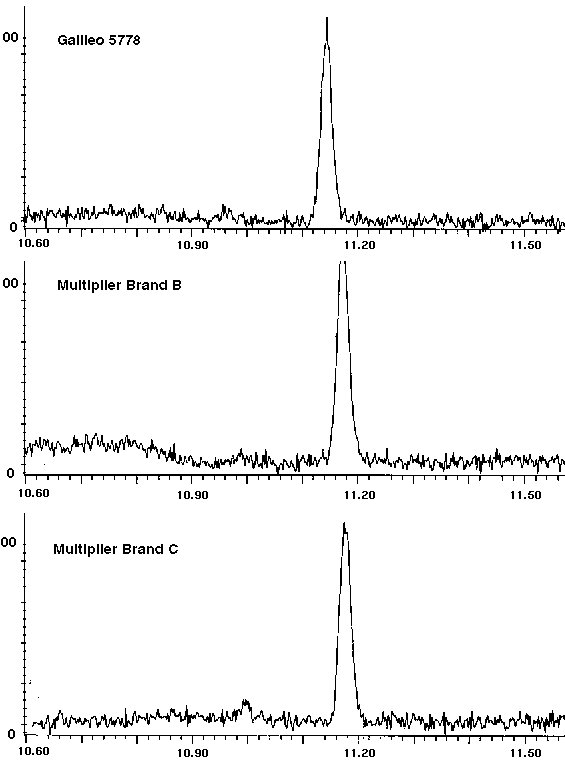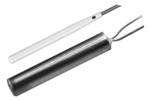- ▶
- Heaters/Source
- ▶
- Agilent Heaters and SensorsMass Spectrometry, Scientific Supplies & ManufacturingScientific Instrument Services 5973 Source Heater Tamper Resistant Allen Wrench 5973/5975 Quad Sensor 5985 Source Heater Assembly Agilent Interface Heater Assembly 5971 Interface Heater

- ▶
- MultipliersAgilent/HP Amptek Anelva Bear BioRad/Ciphergen Bruker Cameca Comstock CVC 1100 Dune DuPont Extrel FEI GBC Griffin Hiden Hitachi Inficon(Balzers/Leybold) JEOL LKB Mass Analyzer Products Mass Sensors McCallister Nermag Nu Inst Orbital Omicron PerkinElmer Riber Sciex/AB Seiko Sensar Shimadzu (Kratos) Standford Teledyne Thermo/Finnigan Ulvac UTI/MKS Vacuum Tech Varian Vestec Viking Waters/Micromass/VG Generic Catalog Page A40 Catalog Page A41 Catalog Page A42 Catalog Page A43 Catalog Page A36

- LiteratureApplication Notes Adsorbent Resins Guide Mass Spec Tips SDS Sheets FAQ MS Calibration Compound Spectra Manuals MS Links/Labs/ Organizations MS Online Tools Flyers on Products/Services Scientific Supplies Catalog About Us NextAdvance Bullet Blender® Homogenizer Protocols Micro-Mesh® Literature Instrumentation Literature Agilent GC/MS Literature SIS News / E-Mail Newsletter NIST MS Database - Update Notifications

- ▶
- Mass Spec Tips1 - Freon for use in Mass Spectrometer Leak Checking 2 - Mass Spectrometer Probe Cooling 3 - Sample Vials for Direct Probes 4 - Selection of Vacuum Pump Oils for Lowest Mass Spec Background 5 - Determination Linkages in Biomolecules of Disulfide 6 - Transfer of H.P. ChemStation MS and GC Chromatograms from PC to MAC Computer 7 - Repairing Clogged Thermospray Probes 8 - Tuning a Finnigan 5100 to Meet BFB or DFTPP Criteria 9 - H.P. 5971 Transfer Line Tip for Direct Introduction of Capillary Column 10 - Troubleshooting Finnigan 5100 GC/MS Systems 11 - Leak Checking Mass Spectrometers 12 - Elimination of Memory Peaks and GC Background Noise 13 - SuperIncos Mapped Software Print Buffer Lockup 14 - Reduction of Peak Tailing 15 - Electron Multiplier Sensitivity 16 - INCOS Procedure for Calibrating on the Finnigan 4500 17 - Extending Electron Multiplier Life 18 - What techniques or methods do you use to determine if the electron multiplier 19- What techniques or methods do you use to detect vacuum leaks in your mass spectrometer 20 - Extending Lenear Range of the Mass Spec Article - Improving Sensitivity in the HP 5971 Mass Spectrometer - Part 1 and Part 2

- ▶
- 15 - Electron Multiplier Sensitivity (This Page)
 Mass Spec Tips is a collection of tips relating to the operation
and service of mass spectrometers. Some of these Tips have been
reported in our newsletter, "The Mass Spec Source."
If you have a question relating to the operation or service of
mass spectrometers or would like to add your comments to the below
tip and would like to have it included in this forum, please contact us.
Input to this database of MS Tips is needed from our readers
to complete this section.
Mass Spec Tips is a collection of tips relating to the operation
and service of mass spectrometers. Some of these Tips have been
reported in our newsletter, "The Mass Spec Source."
If you have a question relating to the operation or service of
mass spectrometers or would like to add your comments to the below
tip and would like to have it included in this forum, please contact us.
Input to this database of MS Tips is needed from our readers
to complete this section.
by John J. Manura,
Affiliation: Scientific Instrument Services
With the prolific addition of new manufacturers of electron multipliers (mass spec detectors) for mass spectrometers, the competition among manufacturers is becoming fierce. Each manufacturer claims that their multiplier is the most sensitive or has the longest life or the greatest dynamic range. In order to provide mass spectrometers with the optimum sensitivity, the mass spectrometer manufacturers are investigating all aspects of the mass spectrometer that can effect sensitivity. These not only include the multiplier but also the mass spectrometer filament, source design and analyzer design. As a result of the increased competition among electron multiplier manufacturers, the electron multipliers have indeed improved in performance over the last few years. The mass spectrometer user is faced with the daunting task of determining which multiplier is the best for his instrument based on instrument manufacturers recommendation and electron multiplier manufacturers hype. In an attempt to determine the validity of some of this advertising, S.I.S. recently installed several manufacturers multipliers in an H.P. 5971 mass spectrometer in order to compare the operation of the multipliers in a true on-line working mass spectrometer. The goal was to compare multipliers on the same instrument to determine the signal to noise ratios, under identical operating conditions with the exact same samples being analyzed.
All multipliers were installed in the same H.P. 5971 mass spectrometer over a 2 week period. Neither the mass spec source nor the filament was changed between any of the multiplier comparisons. All mass spec parameters were kept constant for all the electron multipliers tested. The mass spectrometer was initially tuned using the H.P. ChemStation software. The tests were then performed by increasing the multiplier voltage by 300 volts over the tune value for the multiplier voltage. For the tests, a 5.0 pg sample of Hexachlorobenzene was chromatographed through a 30 meter x 0.25 x 0.5u film DB5-MS column (J&W). The mass spectrometer was operated in the SIM mode at mass 284.
Improvement in Electron Multiplier Performance
Over the last 6 years, Galileo Electro-Optics has introduced several new electron multipliers for the H.P. 5971 series mass spectrometers. With each new introduction, increased performance was achieved. In the first of our series of tests, three Galileo multipliers were compared to determine the improvement in performance as electron multiplier technology improved over the last six years (Figure # 1) with each new model introduction.
Figure 1 - Comparison of Galileo Multipliers
5.0 pg of Hexachlorobenzene (SIM mass 284)
The first multiplier studied was the Galileo Model 4778. This was the standard multiplier provided for the H.P. 5971 at its introduction. It is the standard Galileo electron multiplier horn, mounted between two ceramic plates. In the tests on the Model 4778 multiplier, the signal to noise ratio was about 5:1 for the 5.0 pg of Hexachlorobenzene.
The Galileo model GHP71 multiplier was introduced in 1991. This multiplier incorporated a circuit board for the mounting of the multiplier and multiplier circuitry and other improvements to reduce noise. In our test of this multiplier, the signal to noise ratio improved to about 12:1 for 5.0 pg of Hexachlorobenzene. This was a more than 2 times improvement in sensitivity over the earlier version.
The new Galileo model 5778 was just introduced this year. It has additional improvements in both the design of the mounting hardware as well as the materials used in the construction of the multiplier. When tested, the model 5778 multiplier produced a signal to noise ratio of about 25:1 for the 5.0 pg of Hexachlorobenzene. Again this is more than a 2 times improvement over the model GHP71 and a 5 times improvement over the model 4778. These results vividly demonstrate the improvement in performance of multipliers designed and manufactured by Galileo over the past 6 years.
Sensitivity Comparison of the Galileo 5778 Mass Spec Detector to other Brands of Electron Multipliers
The sensitivity performance of the Galileo Model 5778 Mass Spec Detector was then compared against 2 other brands of electron multipliers (Figure # 2). All detectors were tested under identical conditions as described above.

Figure 2 - Comparison of Different Manufacturers Multipliers
5.0 pg of Hexachlorobenzene (SIM mass 284)
These tests showed that the signal to noise ratios of the other two brands of electron multipliers were similar to the sensitivity of the Model 5778 Detector.
It must be pointed out that only one detector from each manufacturer was investigated for this study. A more complete study would require extensive testing of a large number of detectors. It must also be pointed out that other parameters should be considered when comparing detectors, including dynamic range (linearity of signal as a function of sample size), linearity of detector response as a function of mass range, detector lifetime, and the ease and accuracy of installation. The Model 5778 Detector has been designed specifically for higher performance in all of these areas.
A complete study would investigate all of these parameters for a large number of detectors from each manufacturer. S.I.S. has no plans to conduct such a study at this time, due to the cost of this extensive of an evaluation, and the unbiased cooperation of the various detector manufacturers which would be required.
The above data, while not entirely complete, does demonstrate the improvement in detector performance achieved by manufacturers over the last few years. In the use of the three manufacturers detectors based on a limited study, we would rate the sensitivity performance of the three detectors to be similar.
However, we continue to market the Galileo Channeltron¨ 5778 Mass Spec Detector, because it offers slightly higher sensitivity, and is designed for substantially higher dynamic range, and longer lifetime performance than other available detectors. Galileo also has a long history and vast experience in detector manufacturing, the largest market share among mass spectrometer instrument manufacturers, and an outstanding commitment to continually improve their product. In our opinion, and in every aspect, Galileo's Channeltron Mass Spec Detectors perform equal to, and in most cases, better than any other detector on the market.

